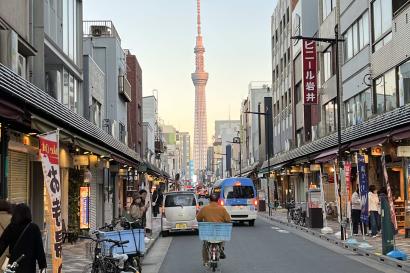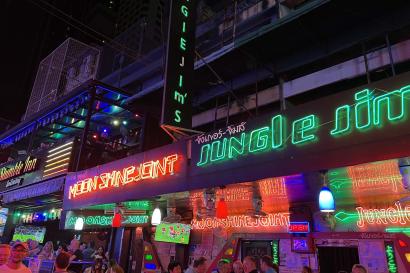
The strength of Japan’s soft power is undeniable. It’s hard to conjure up an image of Japan that’s anything but the grace and beauty of Japanese traditional arts or the glimmering Tokyo steel and glass skyline littered with 24-hour karaoke companies and technicolored billboards. Japan attracts people from all walks of life, each person seeing Japan through their own lens. However, there is another side of Japan that most people fail to acknowledge when they construct this utopian image of the country.
Due to a combination of factors like Japan’s low birth rate, and rapidly aging society, populations in some areas have started to dwindle, leaving a precarious few. For the class "Intro to Society", we went on a field trip to Kotobukicho, a former haven for Japanese day workers during the economic bubble. Now, however, times have changed. During our time in Kotobukicho, one of the residents allowed us to visit his “home.”
After taking four flights of stairs, I leaned against the wall, panting slightly. A few seconds later, the old man shuffled slowly out of the escalator, leaning heavily on his walking stick. His outstretched arm shook involuntarily as he fumbled to fit the key in the lock. As I watched him slowly push open the door to reveal a room, “three tatami mats in size,” a feeling of intense sadness welled up in my chest. The room smelled like dust, and grime, and decay. There were stacks of empty, or half-eaten ramen bowls pushed up against the shelf, with multiple chopsticks fanned out against the brims. My eyes roamed over the neat pile of sheets folded in the corner, and two small loafers propped up against the entrance step.
As I stepped back quickly from the entryway, Chie-san (our guide) translated the man’s words,
“He says that he’s been here since he was 18, and he will turn 72 soon.” The sentence hung in the air, and as we walked back to the station I found it hard not to think about the old man in his small room, surrounded by empty ramen bowls and used chopsticks.
“The population is aging rapidly,” Kondo-san, the unofficial leader of the residents, told us during our lecture. “About 60% of the population is over 65 years old and the demographics won’t be changing any time soon. There are very few women, children, or entire families in this region because of the legacy of day-workers.”
It’s so hard to reconcile the tech-savvy, glitzy image of Tokyo perpetuated by the media, with my experience at Kotobukicho. It was a city of old men and old buildings, crooked and bent, mere spectators to Japan’s rise in industrial strength. The air was heavy and voices were muted. Some people raised their hands in greeting to Kondo-san, but otherwise, the streets felt eerily quiet without the sounds and chatter of the inner-city din of Tokyo.
During his lecture, Kondo-san told us about his fight for recognition from the local Yokohama government. According to him, the government’s current statistics regarding the homeless problem in Japan is vastly underestimated. Since many surveyors work government hours from 9a-5p, they do not think to count the people living in 24/7 internet cafes or eateries, or the people who sleep on the streets at night. Over the years, he has fought for government recognition on behalf of Kotobukicho’s residents, who face daily discrimination. Employers will not consider a candidate from Kotobukicho, no matter how nicely he presents himself nor how qualified he is for the position. Kondo-san has spearheaded movements to change the laws in order to allow homeless residents to apply for welfare. However, socioeconomic and age discrimination against residents from Kotobukicho prevents them from re-entering the workforce and finding steady employment.
In the wake of such a hardship, there have been various movements to foster a sense of community between the remaining residents in areas like Kotobukicho, across the country, encouraging them to gather daily for friendly games of mah-jong or a group calligraphy lesson. Kondo-san busies himself by coordinating soup kitchens, new year’s celebrations, and community movie nights. The best thing he can do now is to enhance their quality of life. These small pockets of forgotten Japan have come to show me the true strength of a community. Japan is not utopia, no matter how perfect it may seem on the outside. But, a place does not have to be perfect to be inspiring.
I am reminded that out of the wreckage, springs resilience.

Emily Okikawa
<div>Emi Okikawa escaped from Oahu, Hawaii by hiding in the cargo hull of a plane headed for the East Coast. </div>
<div>She was last seen at Franklin & Marshall College in Lancaster, PA.</div>
<div>Recent rumors have surfaced about her being set loose in Tokyo. Be advised, the suspect has been spotted eating her weight in Japanese pastries and sitting in animal cafés for multiple hours a day.</div>








